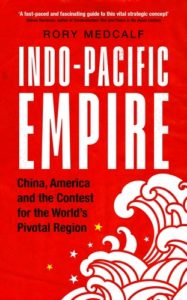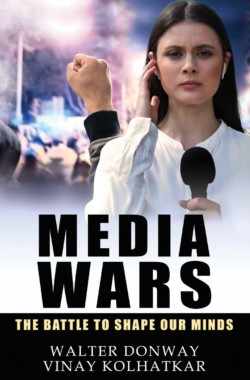Part II: How India Can Displace China as Asia’s Economic Juggernaut
This is a two-part essay.
Part I illuminates how China became an economic juggernaut. This is Part II.
It’s never a cliché to say India is complicated.
To fathom a country’s complexity, one must dig into its history. But here we want to dwell on its future—the next three decades, not the last four centuries.
But the enlightened will be less impatient with today’s inertia when they glean how the past weighs on it. It won’t hurt to take a quick peek at the two biggest scars.
The Scars Left by the East India “Company”
The word “loot,” it seems, was rarely heard outside India until the late 18th century. In Hindi, it meant anything taken dishonestly—usually the spoils of war.
But Britain did not merely import the word “loot” into the English language—looting was itself a driving force behind imperialism. The looting started, amazingly, not via a military invasion from the high seas, but through a “trading corporation” known as the East India Company.
National Geographic tells us (emphasis mine):
In 1600, a group of English businessmen asked Queen Elizabeth I for a royal charter that would let them voyage to India on behalf of the crown in exchange for a monopoly on trade.
Between 1600 and 1874, it built the most powerful corporation the world had ever known, complete with its own army, its own territory.
[By 1874], the East India Company had been involved in everything from getting China hooked on opium to the international slave trade.At its height, it had an army of 260,000 (twice the size of Britain’s standing army [today]) and was responsible for almost half of Britain’s trade.
Some “corporation.” It collected taxes by force, plundering as it traded. One economist calculated that from 1765 to 1938, the aggregate “loot” taken from India was worth $45 trillion (in current value).
In denouncing imperialism, however, the press ignores the positive and loves to conjoin imperialism with capitalism.
From 1858 to 1947, the British monarch “ruled” over India conventionally. The British never integrated into the country as honest traders and high-technology manufacturers. But the British also introduced India to vaccinations, universities, integrated armed forces, social reforms, and a more secular, case-law legal system.
In denouncing imperialism, however, the global postmodernist press ignores the positive and loves to conjoin imperialism with capitalism. The two systems have nothing in common.
Nevertheless, the distrust of “foreign corporations,” embedded into a national psyche for three centuries, has yet to be fully dissipated.
The Greatest Genocide in World History
Before the “traders” with guns came the barbarians brandishing swords. French historian Francois Gautier, quoting other Dutch, American, and French historians, says the Islamic invasions of India led to the “Hindu Holocaust”:
Let it be said right away: the massacres perpetuated by Muslims in India are unparalleled in history, bigger than the Holocaust of the Jews by the Nazis; or the massacre of the Armenians by the Turks; more extensive even than the slaughter of the South American native populations by the invading Spanish and Portuguese.
The bloodiest Muslim deeds in India were done from the 14th century onwards, thanks to the Mughals, who today have been nearly raised to the ranks of great art patrons and benevolent rulers.
Citing other scholars and historians, the New Indian Express speaks of a way forward:
Marxist historians have long been denying the reality of the violent Islamic invasions. India must know the truth and make peace with it.
Gautier, however, is incredibly optimistic—he calls India the “land of tolerance,” see minute 1.30 to 3.00 here (“every persecuted religious community in the world has found refuge in India—the only country in the world where the Jews were never persecuted”).
The Gold Standard of Economic Progress
India was a colossal economic failure from 1947 to 1991. From a “real economics” perspective, it’s easy to understand why.
But political stability in the midst of democracy and tolerance has never been sufficient for the economic engines to rumble. India was a colossal economic failure from 1947 (when the British left India to a democratic self-rule) to 1991. From a “real economics” perspective, it’s easy to understand why.
The canon of “real economics” can be summarized in seven tenets (we covered numbers 3 to 5 in detail in Part I), all of which always and everywhere hold true.
- When markets are free, prices of goods and services are discovered, repeatedly and frequently, in the process of voluntary negotiation. High prices that continue to attract demand while delivering profits, entice new entrants into the industry. Low prices do the opposite. Market failures never exist.
- Creditors need a reward for deferring consumption, as well as for taking the risk of losing their money. Interest rates are thus the price of credit. They, too, should be discovered by the market, not set by some “Reserve” or central bank.
- Economic growth is primarily driven by scientific progress and innovation. In turn, innovation drives up the supply of investible savings. Capital when invested wisely in profitable ventures, begets more capital, and aids further innovation.
- The economic arrow is unidirectional. Production always comes first. Producers, including workers who receive wages, use their compensation to demand other available goods and services.
- An investment forced by decree (say, on a high-speed train project—a politician’s dream) must deprive some other investment of savings. The politician’s dream is the market’s nightmare—capital will most likely be wasted.
- A government that interferes with voluntary contracting by setting prices, inserting caveats, or arbitrarily voiding valid contracts, is working against its own people. A corporation is a nexus for voluntary contracts, a place where individuals can choose to offer services or capital in exchange for compensation. Corporate officers are no more prone to corruption than anyone else—they’re much worse only when an incestuous relationship with bureaucrats is made mandatory by a “mixed economy.”
- Businesses are led by humans who make errors sometimes. But there is no intrinsic force in the market that snares millions of unrelated businesses to simultaneously make the same mistake. There is no “business cycle” except as caused by governments.
India’s Economic History in a Nutshell
Unfortunately in 1947, Prime Minister Jawaharlal Nehru, oblivious of the canon, found inspiration in the Soviet central planning model. Successive governments were equally naive.
Of course, government actors are human. People desire power and prestige, even if unearned. Bureaucratic power and prestige stems from an ability to refuse permissions or grant favors, not from productive or innovative genius.
It would take up to two years to get a landline telephone and three to import a computer.
From the Marxist “landlord-bad, tenant-good” axiom leading to rent freezes in major cities causing dilapidation of structures, to ownership of “major industries” and extensive manipulation of voluntary contracting in agriculture, industry, employment, and foreign ownership—the government was everywhere—interrogating, directing, commanding—handing itself a largesse of power, crucifying the economy.
It would take up to two years to get a landline telephone and three to import a computer. Going abroad even as a student or a tourist needed the central bank’s permission—for the foreign exchange!
In 2016, the Cato Institute said of the period pre-1991:
Nothing could be manufactured without an industrial license or imported without an import license, and those licenses were scarce and difficult to get. Any producers who exceeded their licensed capacity faced possible imprisonment for the sin of violating the government’s sacred plan targets. India was perhaps the only country in the world where improving productivity (and hence exceeding licensed capacity) was a crime.
In 1991, India came within weeks of a sovereign payment default. But the Gulf War had begun, and the United States needed refueling stops for its war planes en route to Saudi Arabia from their Philippine Air Force base for Operation Desert Storm—India offered it three.
Pleased, the U.S. prodded the IMF for a $2 billion face-saving loan, which finally pushed India into market-oriented reforms.
The 1991 reforms crippled the License Raj. Public sector monopolies in telephony, aviation, banking, and insurance were ended. Import duties were slashed. The policy of reserving production of specified items (e.g., biscuits) for “small” industries was abolished. Foreign capital investment and the import of technology got easier.
Indians had never known bank loans for housing finance or consumer durables. Such finance suddenly revealed that many unbroken “joint families” living under one roof were the product of economics rather than culture.
Economic growth soared. But, unlike other “Asian tigers,” India was only half a leopard—it could change its spots, but not turn 180 degrees while in full flight.
Much remains to be done—agriculture remains subsidized, labor laws stay protectionist, and land titles remain uncertain. Capital flows and interest rates are still unfree. The State interferes in education by reserving places for the less meritorious.
The First Five Steps
A government which legislates itself into interference has to legislate itself out of it—power is not easily relinquished.
The task is herculean because a government which legislates itself into interference has to legislate itself out of it—power is not easily relinquished.
- Uncertain land titles, courtesy a difficult history, have been a key issue deterring foreign investment. Anirudh Burman of Carnegie India says:
India does not guarantee the legal conclusiveness of land records maintained by state governments. Such records are presumptive in nature and can be rebutted in a court of law. The Central Government has embarked on a programme to modernise land records with the ultimate objective of creating a system of conclusive titling—where the state guarantees the validity of the records it maintains—and indemnifies persons who suffer losses arising from a defect in the state’s guarantee of good title.
Burman argues for a market-based title insurance to supplement state indemnities. Even the U.S., he mentions, follows a recording system similar to India, and uses private-sector title insurance.
The need for action on land has been noted. Bloomberg reports that India is seeking to lure firms fleeing China with a land offering nearly double the size of Luxembourg.
- India should not relapse into inadequate policing of intellectual property rights (IPR).
In February, 2020, India and the United States executed a new IPR agreement. Just a year ago, India was one of the 11 countries on the U.S. trade office “black list” for IP theft—a list headed, unsurprisingly, by China.
- Many developed countries have had full capital convertibility for decades. All countries that do not pose a security or IP theft risk would need to be allowed full ownership and access to the domestic and export markets and an unlimited capital outflow of dividends.
It’s time for vestiges of the imperialistic-corporation-derived distrust to be extinguished.
- An Australian government report notes that:
India’s energy sector is governed by a complex set of institutional arrangements. Both central and state governments are heavily involved in the energy sector.
Thankfully, India has the world’s fifth-largest proven coal reserves. But the government seems unaware that carbon alarmism is a racket that must be countered openly.
While the lack of energy self-sufficiency did not impede Japan, Singapore, and Taiwan from becoming Asian tigers, India must liberalize its energy industry.
- The lockdown must be ended immediately—the COVID-19 death rate is awfully low—for India, this is not a deadly pandemic. See also The Pandemic: Cardinal Numbers No One Talks About—there’s no good medical reason to risk crashing the economy.
India can ill afford the neglect of other killer diseases (including infectious diseases such as TB that kill many multiples more) and child deaths from malnutrition. The lockdown has also incited police brutality and displaced millions of poor interstate migrants, potentially into more disease.
The Path to Becoming a Genuine Economic Juggernaut
Ultimately, an economy must rid itself of its central bank (in India’s case, the Reserve Bank), let the market decide the form of money and the level of interest rates, and have a court act as a referee (only when needed) for voluntary contracting—ending subsidies, labor laws, anti-merit discrimination in education, and investment approval processes.
But a government’s proper role must include assuring the security of its citizens.
RAND Corporation reports:
Pakistani assistance to Kashmiri insurgents covers the ambit of training, logistical, financial and doctrinal support. At least 91 insurgent training camps have been identified in Pakistan-Occupied Kashmir. Basic courses run for between three and four months, focusing on weapons handling, demolitions and urban sabotage.
[ISI (Pakistan’s intelligence agency)] funds are used to cover salaries for fighters, support next of kin, cash incentives for high-risk operations and retainers for informers.
RAND Corporation alleges that ISI also circulates counterfeit currency, launders profits derived from the heroin trade, and secures donations for jihad from Saudi Arabia.
Radical Islam can no longer invade a strong, nuclear-armed India like the Mughals did. But extremist schools fuel jihadi sentiments, and the ISI trains them. And then there’s the “Five Stages” strategy of Islamic canon from establishing a beachhead to domination.
India is in Stage 4, and can ill afford to ignore so large a totalitarian threat to a free society, while it’s still striving to understand liberty and economics in conceptual terms. But India’s dominant neo-Marxist media relentlessly undermines governments that seek to play fair, abandoning objectivity to tarnish India’s global image.
China vs. the “Free” World
As established elsewhere, it’s the West that has been sliding faster into Postmodernism.
But the West remains freer than the totalitarian states which prefer obedient minions to flourishing individuals. So now, the China hawks in America have been empowered by the pandemic. See also Back to Cold War Parts I-III.
In a cheetah-like nimble turn of international policy of the same magnitude as President Nixon’s visit to China, the U.S. has commenced sponsoring an Asia-Pacific alliance of nations in a new concept of “economic security.” Reuters reports:
The United States is pushing to create an alliance of “trusted partners” dubbed the “Economic Prosperity Network.”
“This moment is a perfect storm; the pandemic has crystallized all the worries that people have had about doing business with China,” said another senior U.S. official.
The U.S. government is working with Australia, India, Japan, New Zealand, South Korea and Vietnam.

Such an alliance was heralded even before the pandemic by Australian National University’s Rory Medcalf, author of Indo-Pacific Empire.
Today, 2 out of 3 Americans have an unfavorable view of China. Unsurprisingly, even Joe Biden is acting hawkish on China.
For India, the global impetus for an Indo-Pacific quest should kindle a spark the way the 1991 economic crisis did. The stars have aligned for the “half-a-leopard” to make its own fast, razor-sharp turns in policy.
But the stats and the epithets should be for media glory. “Displacing China” is a banner that can align the world to what should be India’s real intent: liberation.
If this “complicated nation” frees its people, in decades to come the market will electrify all its villages and magnetize all its people into self-motivated productivity.
This essay benefited from comments made on an earlier draft by Donna Paris and Walter Donway.
« Back to Cold War Part III: For Decades, China’s Been Readying for a “Hot War” Pandemic Metaphysics: Is the Individual Efficacious? Or Helpless? »










